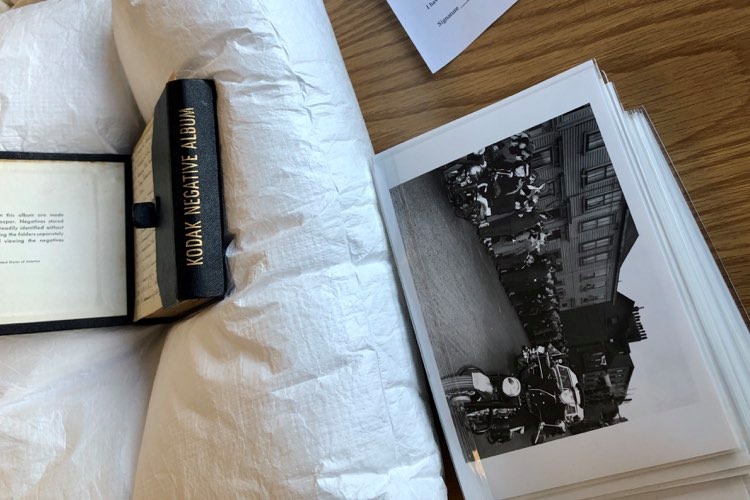Description: In January 2020 I traveled to St. John’s, Newfoundland to do archival research for my Master of Museum Studies degree, about the photographer Charles Fredrick Ruggles.
Ruggles was the first to offer colour commercial printing in Newfoundland, was the official royal photographer for Queen Elizabeth II’s 1951 visit, had one of his photographs used as the national stamp, was published in Life magazine – and was my grandfather. His work captured moments of the province’s first few years and contributed to the photography scene. However, his work remains largely forgotten.
The inspiration for this exhibition came from my desire to know more about my grandfather’s work. Growing up, I had often heard about his photography and had seen a few pieces, though not many. As I learned about his historic accomplishments, I started to think about all the works we see but never know the name of the artist.
I took this photograph in Memorial University’s archives while looking at photographs my grandfather had taken of the Queen’s 1951 visit. The photographs came with a handwritten collections report which catalogued each piece. Seeing his handwritten descriptions brought me closer to understanding my grandfather who died shortly after I was born.
Why did you conduct this research? This research was conducted for my capstone project during my Master of Museum Studies and showcases the photography of my grandfather Charles Fredrick Ruggles. He was the royal photographer for Queen Elizabeth’s visit to Newfoundland in 1951, was published in Life magazine, was the first in Newfoundland to offer colour commercial printing, and his photograph of the Canadian seashore even saw fame as a national stamp. During the late 1940s and early 1950s, Charles Fredrick Ruggles’ photography of Newfoundland helped develop the province’s early visual identity – one that still exists today – yet his contributions remain largely forgotten.
Technique: I used my phone to take a picture of the archival research I was conducting in Memorial University’s Centre for Newfoundland Studies. The artifacts were placed beside a window, allowing natural light to create a well-lit shot.
Acknowledgements: I would like to thank Memorial University, The Rooms, Katie Harris & her family, and Joan & Klaus, who helped me tremendously when I was in St. John’s. I would also like to thank my sponsors, Artscape Youngplace, MPH Travel, Vide Press, and ACKL design, for, without them, this would not have been possible. Finally, I would like to thank my friends, family, and the iSchool, who have been there anytime I needed to talk.

